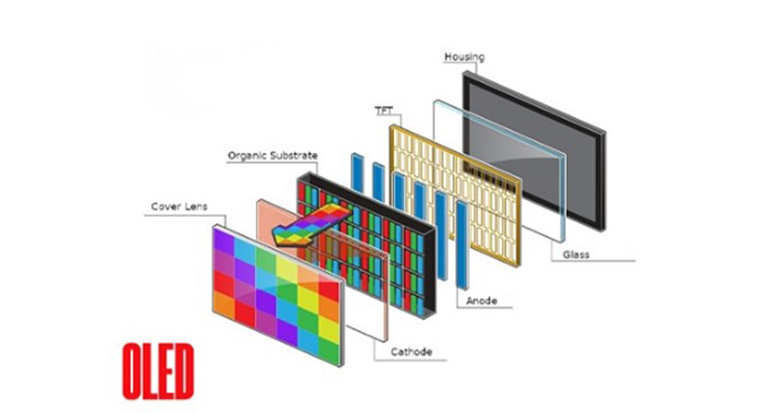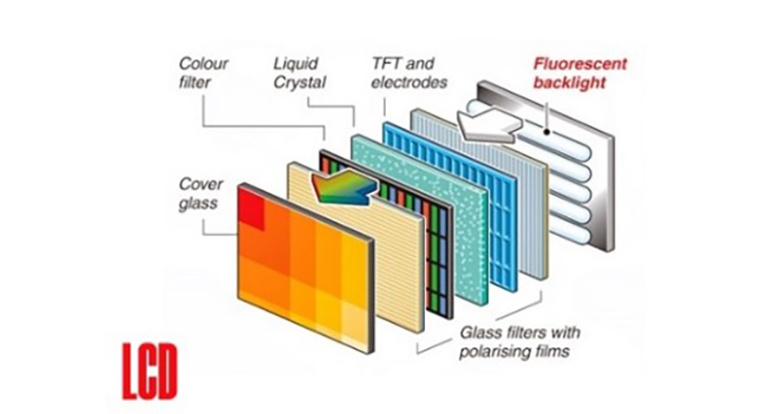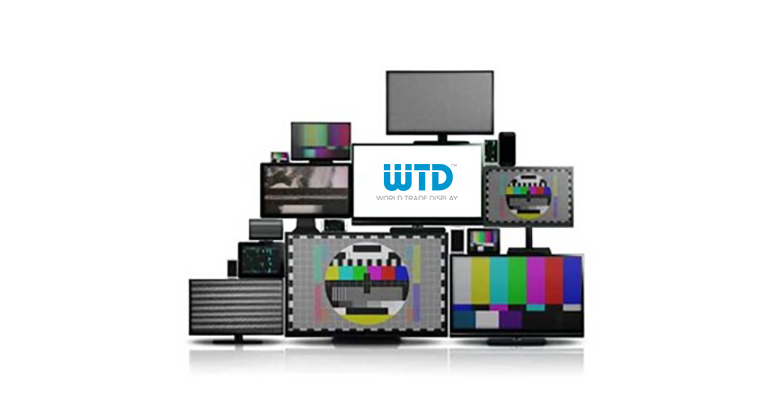The main types of displays are: LCD, LED, OLED and so on. Currently there are many types of displays available, all of which have advantages and disadvantages. Current technologies and their key features will be represented here, such as the differences between reflective, transmissive, or transflective displays, just to name a few.
What does reflective, transmissive or transflective mean?
- Reflective (a similar meaning to reflective) is any display that looks like a digital watch. The displays have no light of their own, but are illuminated by sunlight and the information is shown in most cases in the form of black lines on a clear screen. Very often these displays are used where energy saving is required and in bright environments.
- Transflective means not totally permeable to light. Displays with this technology can be used both with and without backlighting. The advantage lies in the fact that in bright environments there is no need for backlighting, which can be switched on without problems in non-optimal light conditions.
- Transmissive displays are those that find the greatest range of applications. They generally always need a backlight that allows reading. Examples of this type are touchscreens in mobile devices or tablets, as well as screens in machines or computers.



LCD, LED, OLED and their differences
Below are the most important technologies and their characteristics and differences:
- LCD displays do not produce light. These are so-called liquid crystal displays, i.e. screens in which liquid crystals influence the direction of polarization of light under the influence of electric voltage. These displays are used in battery-powered devices, in most cases without lighting. Some examples of the use of such displays are digital clocks or portable measuring devices. They can be equipped with lighting that can be activated additionally or as needed.
- LED screens are known to be used in radio alarm clocks, but also in older machine control systems, used in numeric displays. These are letters or numbers or punctuation marks that are displayed with the help of light-emitting diodes. Displays have their own light and therefore do not need additional lighting. Also, you can read relatively well on these displays in a bright environment.
- OLED displays consist of so-called thin-film components, which in turn are produced from organic semiconductors. The advantages of these displays are the flexible construction. Just like LED displays, OLEDs also have their own lighting, thus not needing an additional one. Flexible screens can even be produced with OLED technology.
- The Quantum Dot marks a modern type of screens which through another type of backlighting have a functionality similar to traditional LC displays. The light itself is blue, but its color is changed by means of electrical semiconductor crystals pointed in a different way, creating thus red or green light points with the help of crystals in addition to the natural blue light. All color shades can be created from the three basic colors. The advantage of this technology is that there is no white backlight, which could cause color distortion.
- HDR corresponds to High Dynamic Range, a technology that allows a more marked representation of colors and contrast. It’s not a type of display per se, but rather a technique used in still images.
Different types of displays in the industrial sector
In the industrial sector it is important that far-reaching information is displayed clearly, often under difficult operating conditions. In this sector all the different types of screens are used, but only the Quantum Dot does not find wide application, above all in those fields in which a high image quality is required.
Information visualization is often at the forefront, therefore robust display types are needed.
The first to be used were LED displays, which are still used in different places today. If the importance is given not only to the task to be performed, but also to data entry, touchscreens are in first place among the technologies to be used, since they have an LC display with an artificial and sensitive layer used to enter data .
The advantage of this technology lies in the clarity with which the information is shown and, in the commands, present with which it can be aligned to the use to be made of the display.
In the industrial sector it very often happens that monitors and displays are used in intricate conditions, such as in places where dust, dirt and vibrations can have negative effects on their operation. The displays are available in different sizes.
It is no longer so rare to find screens of 19 or 23 inches in size, precisely to be able to clearly display a lot of information. Touch-sensitive displays make keys and switches unnecessary and require no special care, which is an added benefit. In many fields this type of display needed traditional command devices in the control panel to be used.
Traditional devices, such as old keys or switches, have been replaced by LED displays with modern data entry technology. In addition to easy maintenance and easy cleaning, the fact that the screens can be easily configured and adapted to the needs of the moment also plays a very important role.




